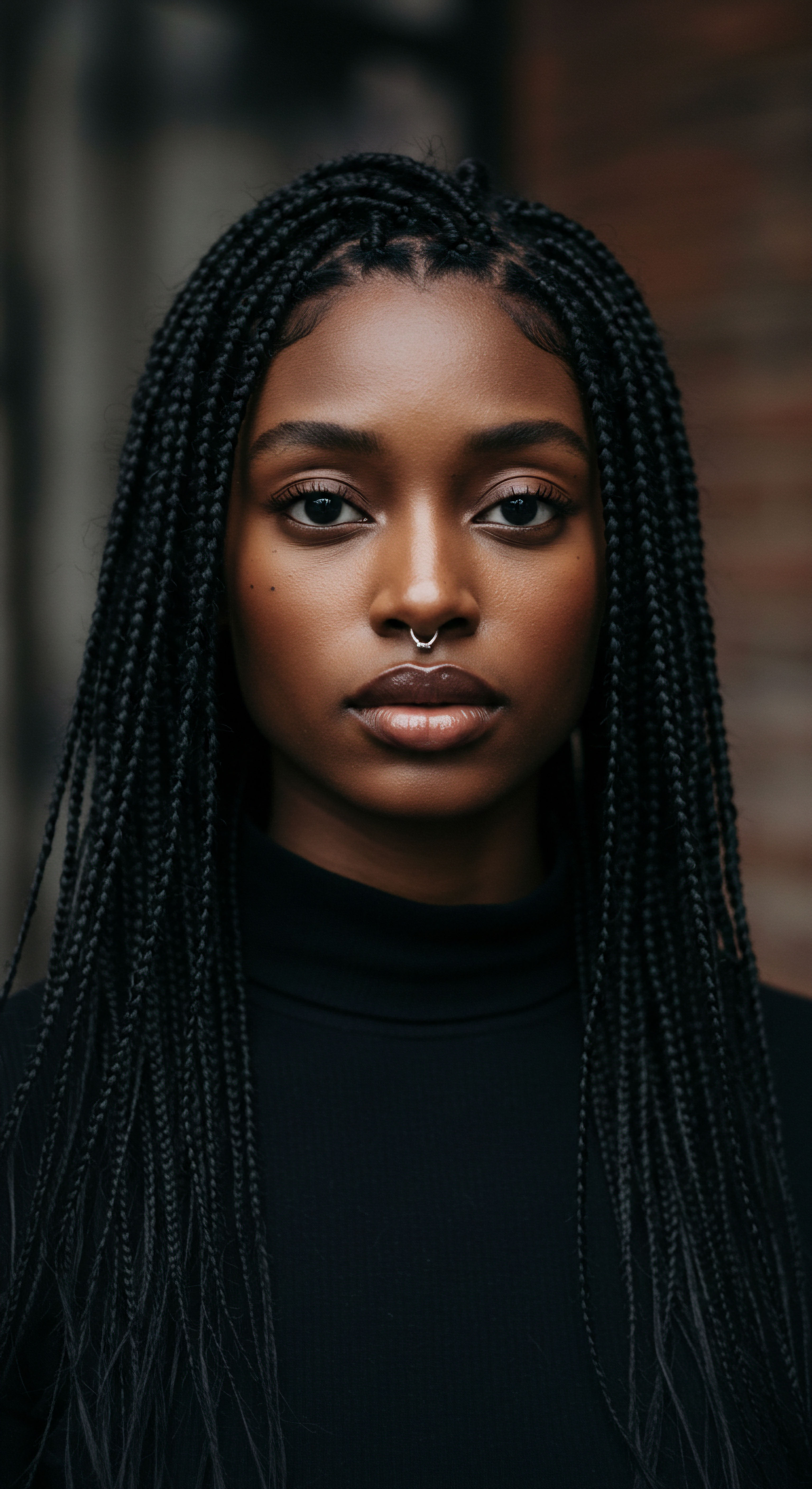
Roots
Have you ever noticed the subtle shifts in your hair, how its vibrancy seems to wax and wane with the rhythm of your days and nights? It is a quiet observation, often dismissed as mere happenstance, yet within these gentle oscillations lies a profound truth. Our hair, a delicate extension of our inner workings, speaks a language of its own, often echoing the whispers of our physiological landscape.
To truly comprehend the intricate relationship between consistent rest and the fullness of our strands, we must first descend to the very beginnings, the foundational understanding of what hair is, how it grows, and the deep, silent rhythms that orchestrate its existence. It is here, at the cellular level, within the unseen cycles, that the story of density begins to unfold.
The journey of a single strand of hair commences deep within the scalp, nestled in a structure called the Hair Follicle. This tiny, yet powerful, organ is a marvel of biological engineering, responsible for generating every hair that graces our head. Each follicle possesses its own miniature ecosystem, complete with blood vessels to deliver vital nutrients and nerve endings that respond to our internal state. The very base of the follicle houses the Dermal Papilla, a cluster of specialized cells that are the true architects of hair growth.
These cells communicate with other cells in the follicle, dictating the growth, thickness, and even the texture of the hair fiber that emerges. For textured hair, these follicles often possess a unique curvature, influencing the distinctive coil patterns and the way light interacts with the strands.
Understanding the life of a hair strand requires a glimpse into its cyclical nature. Hair growth is not a continuous process; rather, it proceeds through distinct phases, each crucial for maintaining density and vitality. These phases are universally present, yet their duration and responsiveness to internal and external cues can vary from person to person, and even between different hair types.
Hair density’s quiet truth lies in the intricate dance of the hair follicle’s cellular rhythms, deeply influenced by the body’s internal state.

The Hair Growth Cycle Explained
Every hair on our head is engaged in a continuous, albeit asynchronous, cycle of growth, rest, and renewal. This cycle ensures a constant replenishment of strands, a testament to the body’s persistent efforts to maintain balance.
- Anagen ❉ This is the active growth phase, where hair cells rapidly divide and differentiate, pushing the hair shaft upwards and outwards from the follicle. This is the longest phase, typically lasting anywhere from two to seven years, and determines the maximum length a hair can achieve. For those with long, dense hair, a prolonged anagen phase is often at play.
- Catagen ❉ A brief, transitional phase, catagen signals the end of active growth. During this period, which lasts only a few weeks, the hair follicle shrinks, and the hair shaft detaches from the dermal papilla. It is a period of quiet preparation for release.
- Telogen ❉ This is the resting phase, lasting for a few months. The hair remains in the follicle, but no active growth occurs. At the end of telogen, a new anagen hair begins to grow, pushing the old hair out. This is the natural shedding we observe daily.
- Exogen ❉ Sometimes considered a sub-phase of telogen, exogen is the actual shedding phase where the old hair detaches and falls out. This is a perfectly normal part of the cycle, making way for new growth.
The delicate balance of these phases is what ultimately determines hair density. When more hairs are in the anagen phase, and the telogen phase is kept at a healthy duration, the appearance of fullness is maintained. Conversely, any disruption that prematurely shifts hairs into the catagen or telogen phases, or prolongs the telogen phase, can lead to a perceived or actual reduction in density.

The Body’s Internal Clocks and Hair
Our bodies operate on a remarkable internal timepiece, the Circadian Rhythm, which governs a myriad of physiological processes, including sleep-wake cycles, hormone release, and cellular repair. This internal clock is profoundly influenced by light and darkness, signaling to our cells when to be active and when to rest and regenerate. The hair follicle, like other organs, exhibits its own circadian rhythm, with cellular activity peaking and waning throughout the day.
During periods of consistent, restorative rest, the body is able to dedicate resources to repair and regeneration. This includes the intricate cellular machinery within the hair follicles. Hormones like growth hormone, which are critical for tissue repair and cell proliferation, are primarily released during deep sleep.
A consistent sleep schedule supports the optimal functioning of these hormonal cascades, providing the building blocks and signals necessary for healthy hair growth. Without this foundational rhythm, the very blueprint for dense, healthy hair can become disrupted, leading to subtle, yet noticeable, shifts in its vitality.
| Phase Name Anagen |
| Description Active growth, cell division |
| Typical Duration 2-7 years |
| Phase Name Catagen |
| Description Transitional, follicle shrinks |
| Typical Duration 2-3 weeks |
| Phase Name Telogen |
| Description Resting, hair stays in follicle |
| Typical Duration 2-4 months |
| Phase Name Exogen |
| Description Shedding of old hair |
| Typical Duration Variable, daily |
| Phase Name Understanding these phases is foundational to appreciating how sleep affects hair. |

Ritual
As we move from the unseen depths of cellular cycles to the visible landscape of our daily lives, a desire for practical wisdom often stirs within us. How do these foundational truths translate into tangible practices that nourish our hair? The answer often lies in the thoughtful rituals we cultivate, the conscious choices that honor our body’s need for balance and restoration.
Consistent rest, far from being a passive state, emerges as a cornerstone of these practices, shaping the very environment in which our hair thrives. It is about understanding that our nighttime habits are not merely about slumber, but about creating a sanctuary where our strands can truly recuperate and prepare for the day ahead.
The relationship between our sleep and our hair’s appearance is not a mere coincidence; it is a direct consequence of the body’s repair mechanisms working optimally during periods of deep rest. When we are consistently depriving ourselves of adequate sleep, these repair processes are compromised, potentially leading to a cascade of effects that can impact hair density over time. Think of it as a garden that is not watered consistently; while it may not wither immediately, its long-term vitality will surely diminish.
Thoughtful nighttime practices transform sleep into a restorative sanctuary for hair, supporting its density and vitality.

The Nighttime Sanctuary Essential Sleep Protection and Bonnet Wisdom
For those with textured hair, the nighttime ritual takes on a special significance. Our unique coil patterns, while beautiful, can be more prone to tangling, breakage, and moisture loss during sleep. The friction against pillows, the movement of the head, and the absorption of natural oils by bedding can all contribute to these challenges. This is where the wisdom of protective measures comes into play, creating a literal sanctuary for our strands as we drift into slumber.
The use of a Satin or Silk Bonnet, scarf, or pillowcase is a practice deeply rooted in the care of textured hair, passed down through generations. These materials offer a smooth, low-friction surface that allows hair to glide freely, preventing the mechanical stress that cotton and other rougher fabrics can inflict.
- Reduced Friction ❉ Satin and silk minimize the rubbing and snagging that can lead to breakage and split ends, particularly at the delicate ends of the hair. This preservation of existing hair length contributes to the overall appearance of density.
- Moisture Retention ❉ Unlike absorbent cotton, satin and silk do not draw moisture away from the hair. This helps maintain the hair’s natural hydration levels, keeping it supple and less prone to dryness-induced brittleness, which can also impact density over time.
- Preservation of Style ❉ Beyond protection, these coverings help to maintain the integrity of hairstyles, reducing the need for excessive manipulation or restyling in the morning, which in itself can contribute to breakage.
Beyond external protection, the internal state of our sleep environment also plays a role. A cool, dark, and quiet room signals to the body that it is time to unwind, promoting the deeper stages of sleep where much of the body’s repair work occurs. This holistic approach to the nighttime sanctuary, encompassing both physical protection and environmental harmony, supports the very conditions necessary for hair to thrive.
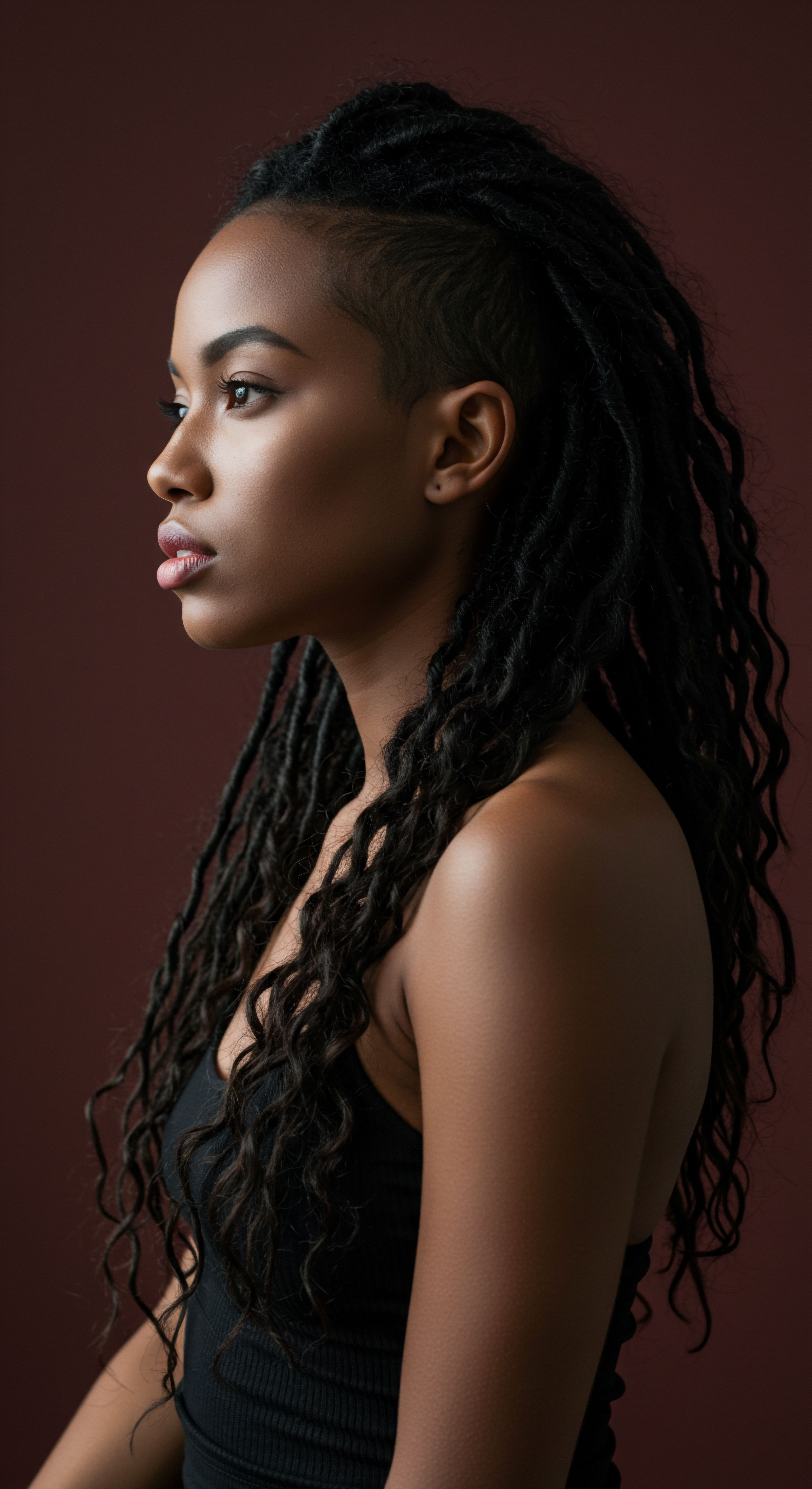
Crafting Your Hair Regimen Around Rest
A personalized hair regimen extends beyond just washing and conditioning; it integrates the rhythms of our lives, including our sleep patterns. Thinking about hair care as a continuous loop, rather than isolated steps, allows us to see how consistent rest becomes an unspoken ingredient in every product we use and every technique we apply.
Consider incorporating a gentle detangling session before bed, perhaps with a leave-in conditioner or a light oil, to minimize morning knots. This small act, when paired with the protection of a bonnet, sets the stage for a peaceful night for your hair. The goal is to reduce stress on the strands while you are unconscious, allowing the body’s natural restorative processes to take precedence. When the hair is not battling external stressors during sleep, it is better equipped to utilize the internal nourishment provided by the body’s regenerative functions.
| Material Satin Bonnet/Scarf |
| Benefits for Textured Hair Reduces friction, retains moisture, preserves styles. |
| Considerations Requires consistent use, can slip off if not secured. |
| Material Silk Pillowcase |
| Benefits for Textured Hair Gentle surface, reduces friction, good for those who dislike head coverings. |
| Considerations Pillowcase needs regular washing, may not fully protect all hair. |
| Material Cotton Pillowcase |
| Benefits for Textured Hair Common, breathable. |
| Considerations High friction, absorbs moisture from hair. Generally not recommended. |
| Material Choosing the right material for nighttime hair protection is a simple yet impactful ritual. |

Does the Timing of Sleep Affect Hair Vitality?
Beyond the quantity of sleep, the consistency and timing of our rest periods also play a profound role. Our bodies are creatures of habit, and the circadian rhythm, that internal clock mentioned earlier, thrives on regularity. When we maintain a consistent sleep schedule, going to bed and waking up at roughly the same times each day, even on weekends, we reinforce this natural rhythm. This consistency allows the body to anticipate and prepare for periods of rest and activity, optimizing hormone release and cellular repair processes.
Disruptions to this rhythm, such as erratic sleep patterns, shift work, or frequent travel across time zones, can throw the body’s internal clock out of sync. This desynchronization can lead to a state of mild physiological stress, impacting various systems, including those responsible for hair growth. When the body is constantly adjusting to irregular sleep, it may prioritize more immediate survival functions over non-essential processes like hair maintenance and growth, potentially contributing to reduced hair density over time. This consistent timing allows the body to perform its regenerative tasks without constant recalibration.
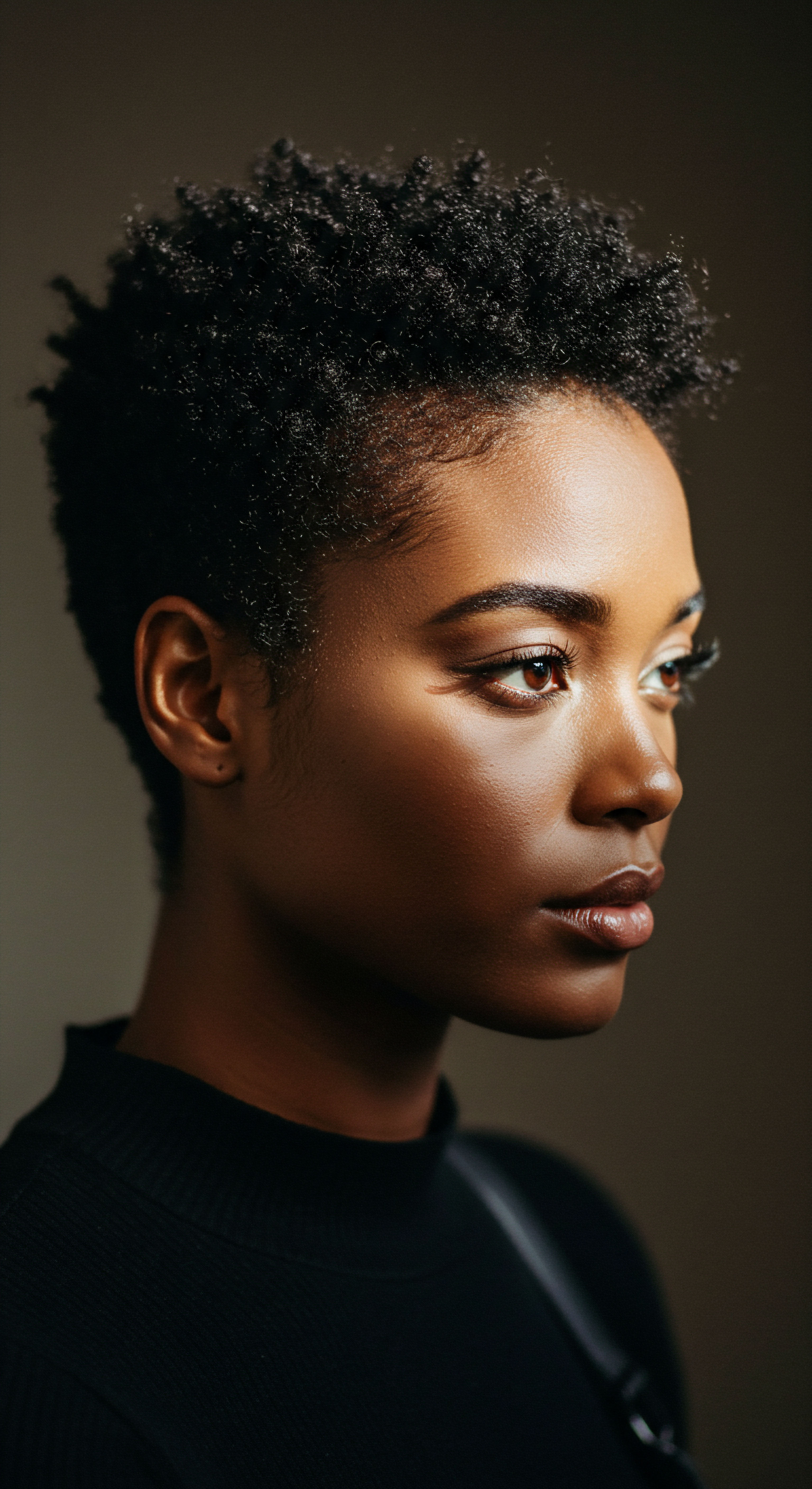
Relay
Having traversed the foundational anatomy and the gentle rituals of hair care, we now ascend to a more sophisticated exploration, where the delicate strands on our heads become a lens through which to perceive the profound interplay of biology, environment, and even cultural context. Does consistent sleep truly improve hair density? The inquiry deepens here, moving beyond simple cause and effect to unravel the intricate mechanisms and less apparent complexities that connect our nocturnal repose to the very fabric of our hair. It is a space where scientific discovery meets lived experience, where the unseen becomes understood, and where data points illuminate the quiet wisdom of our bodies.
The link between sleep and hair density is not a simple linear progression, but a complex web of hormonal regulation, cellular repair, and systemic well-being. Sleep is a period of intense activity for the body, a time when crucial biological processes are recalibrated and replenished.

The Cellular Symphony of Sleep and Hair Growth
During deep sleep, our bodies release a symphony of hormones that are directly relevant to cellular repair and growth. Growth Hormone, for instance, reaches its peak secretion during slow-wave sleep. This hormone is not just for childhood development; in adults, it plays a critical role in tissue repair, cell reproduction, and regeneration, including the rapid cell division occurring in the hair follicles. Adequate levels of growth hormone support the robust activity of the dermal papilla cells, which are the powerhouses of hair production.
Conversely, a lack of consistent sleep can lead to elevated levels of Cortisol, often referred to as the stress hormone. While cortisol has vital functions, chronic elevation can be detrimental to many bodily systems, including the hair growth cycle. High cortisol can disrupt the delicate balance of hormones, potentially pushing hair follicles prematurely from the active anagen phase into the resting telogen phase, leading to increased shedding and a reduction in density. This hormonal imbalance can create an unfavorable environment for optimal hair production, essentially signaling to the follicles to slow down or cease their energetic work.
Moreover, sleep is when the body actively repairs cellular damage caused by daily stressors, including oxidative stress. Antioxidant defenses are bolstered, and inflammatory pathways are regulated. Chronic sleep deprivation can lead to a state of low-grade systemic inflammation, which can negatively impact the health of hair follicles, potentially contributing to their miniaturization or premature entry into resting phases.
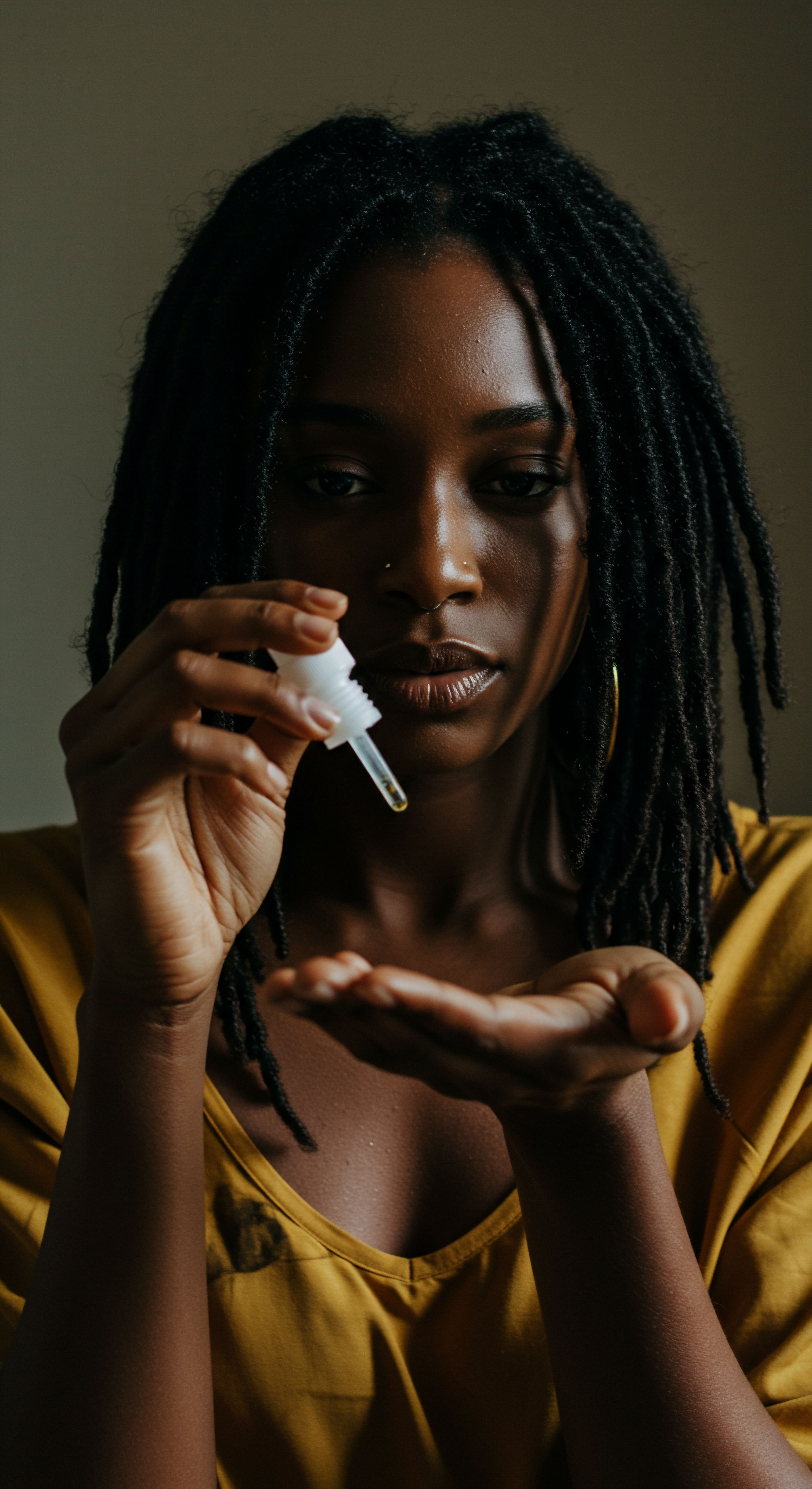
Can Disrupted Sleep Patterns Impact Hair Follicle Health?
The concept of circadian rhythm, our body’s natural 24-hour cycle, extends even to the hair follicle itself. Research suggests that hair follicles possess their own intrinsic circadian clocks, influencing the timing of cellular proliferation and differentiation. When our sleep patterns are erratic or consistently disturbed, this internal follicular clock can become desynchronized from the central body clock. This desynchronization can disrupt the optimal timing of growth-related processes within the follicle, potentially hindering its ability to produce strong, healthy hair.
A compelling example of this link can be observed in populations with consistently disrupted sleep schedules. A study published in the Annals of Dermatology in 2020 investigated the Association between Shift Work and Hair Loss in Korean Adults. The cross-sectional study, involving a significant cohort, revealed a higher prevalence of hair loss among shift workers compared to non-shift workers. While this study highlights an association and not necessarily a direct causation solely by sleep, shift work inherently involves irregular sleep patterns, circadian rhythm disruption, and often increased stress, all of which are interconnected factors that collectively influence hair health.
This suggests that the cumulative impact of inconsistent sleep, as experienced by shift workers, may indeed contribute to visible changes in hair density. The constant disruption prevents the body from settling into the restorative cycles necessary for optimal follicular function.
Chronic sleep disruption can elevate cortisol, fostering systemic inflammation that may prematurely push hair follicles into resting phases, diminishing density.
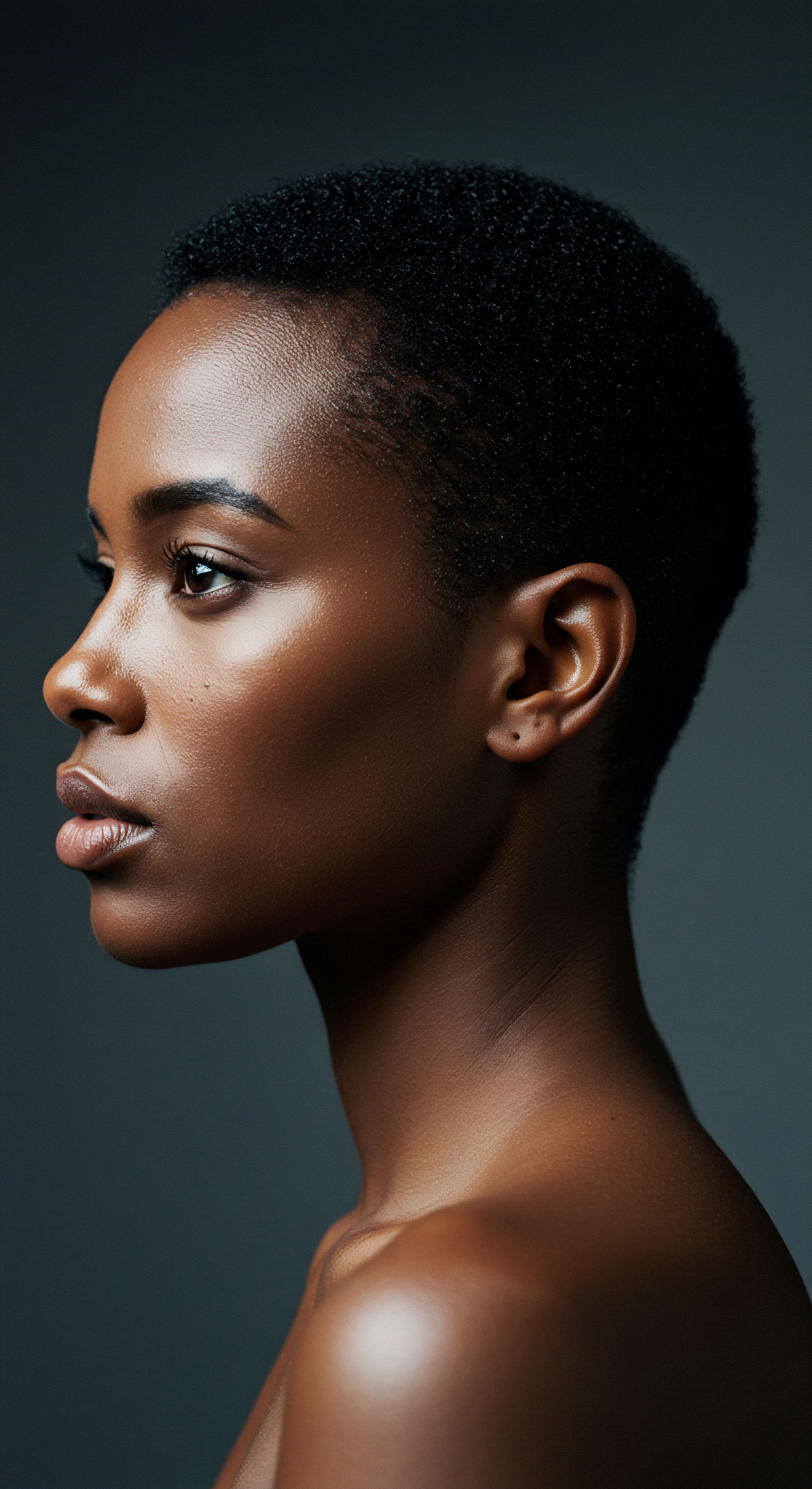
Beyond the Biological How Does Sleep Intersect with Cultural Well-Being?
The discussion of sleep and hair density extends beyond mere biological mechanisms to touch upon broader concepts of well-being, cultural practices, and the holistic view of self. In many cultures, rest is not merely a biological necessity but a revered practice, a period for spiritual renewal and physical restoration that is deeply intertwined with beauty and vitality.
Historically, across various traditions, beauty rituals often included practices that promoted rest and tranquility. From elaborate nighttime hair preparations in some African and Caribbean communities to the emphasis on restorative sleep in Ayurvedic practices, there is an implicit understanding that a well-rested body translates to a more radiant appearance. This perspective views hair as a barometer of internal harmony, reflecting the overall state of an individual’s health and peace.
The pressure of modern life, with its constant demands and blurred lines between work and rest, often pushes sleep to the periphery. Yet, returning to the wisdom embedded in cultural practices reminds us that prioritizing consistent, quality rest is not a luxury but a fundamental act of self-care. It is an acknowledgment that our bodies, including our hair, require specific conditions to flourish. This deeper appreciation for rest, informed by both scientific understanding and cultural wisdom, strengthens the argument for its critical role in maintaining hair density and overall vitality.
- Stress Reduction ❉ Consistent sleep reduces physiological and psychological stress, which can directly mitigate stress-induced hair shedding, known as Telogen Effluvium.
- Cellular Repair ❉ During deep sleep, the body performs crucial cellular repair and regeneration, including the rapid cell division required for healthy hair growth.
- Hormonal Balance ❉ Regular sleep patterns support the optimal release of growth hormones and help regulate cortisol levels, both vital for maintaining a healthy hair growth cycle.

Reflection
As the gentle light of understanding dawns upon the intricate connections between our sleep and the vitality of our hair, we are left with a quiet realization. The quest for dense, thriving strands is not merely about external applications or fleeting trends. It is an invitation to listen more closely to the body’s subtle cues, to honor its inherent wisdom, and to recognize that true radiance often springs from the profound depths of consistent, restorative rest. Our hair, in its myriad textures and forms, serves as a delicate yet powerful echo of our inner harmony, urging us to cultivate rhythms that truly nourish our entire being.

References
- Shin, J. et al. (2020). Association between Shift Work and Hair Loss in Korean Adults ❉ A Cross-Sectional Study. Annals of Dermatology, 32(6), 793–801.
- Hardman, J. G. & Limbird, L. E. (Eds.). (2001). Goodman & Gilman’s The Pharmacological Basis of Therapeutics (10th ed.). McGraw-Hill. (For general hormonal regulation and physiological processes).
- Paus, R. & Cotsarelis, G. (2008). The Biology of Hair Follicles. New England Journal of Medicine, 359(10), 1042–1052. (For hair follicle anatomy and growth cycles).
- Krueger, J. M. & Majde, J. A. (2003). Sleep and the immune system. In M. H. Kryger, T. Roth, & W. C. Dement (Eds.), Principles and Practice of Sleep Medicine (4th ed.). Elsevier Saunders. (For general sleep physiology and its systemic effects).
- Walker, M. (2017). Why We Sleep ❉ Unlocking the Power of Sleep and Dreams. Scribner. (For a comprehensive overview of sleep’s impact on health).
- Peters, E. M. J. et al. (2007). Stress and the hair follicle ❉ exploring the link between brain and skin. American Journal of Pathology, 171(6), 1735–1742. (For the link between stress and hair).
- Reichard, S. (2007). The Hair Bible ❉ A Complete Guide to Healthier, Stronger, Shinier Hair. Fair Winds Press. (For general hair care and health information).